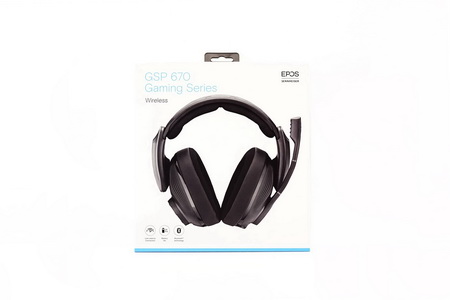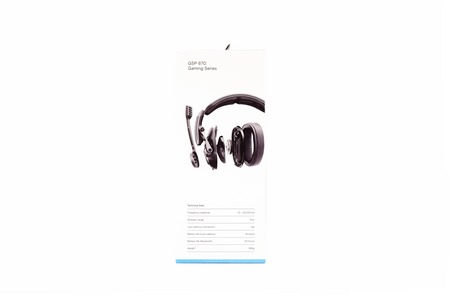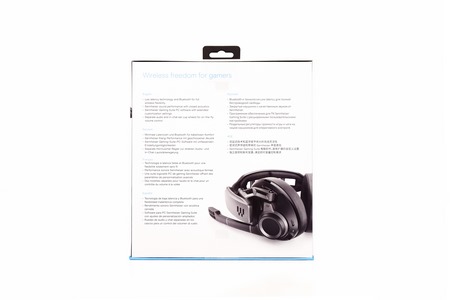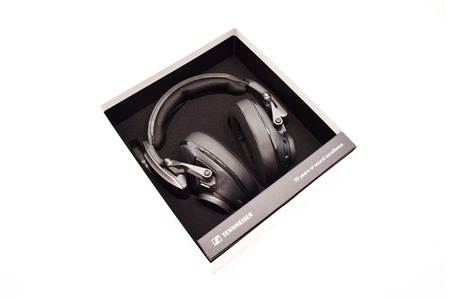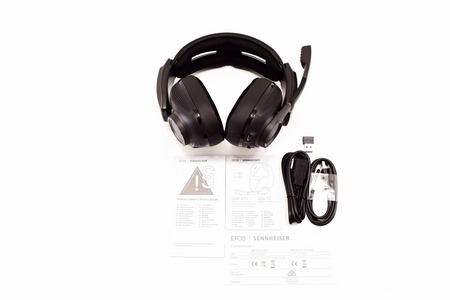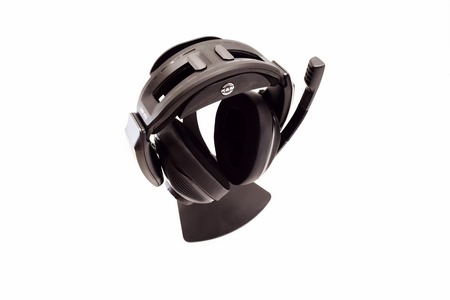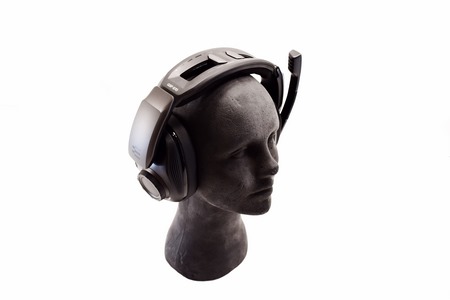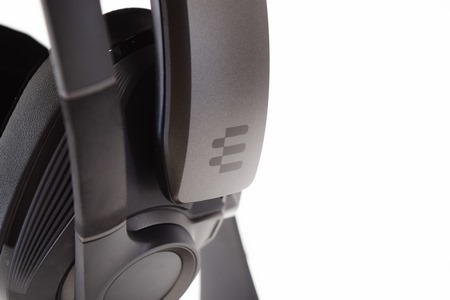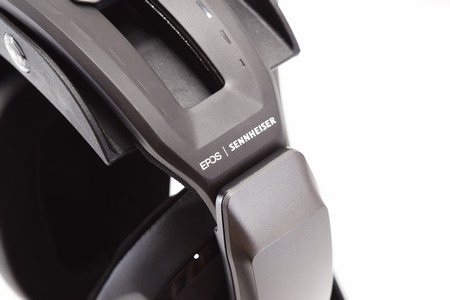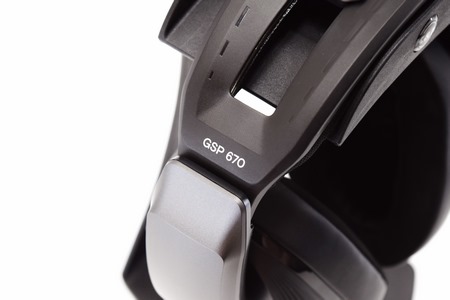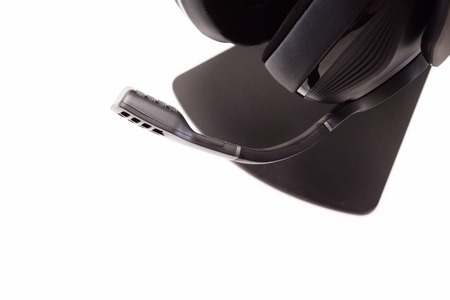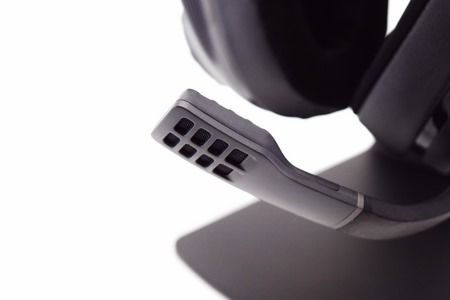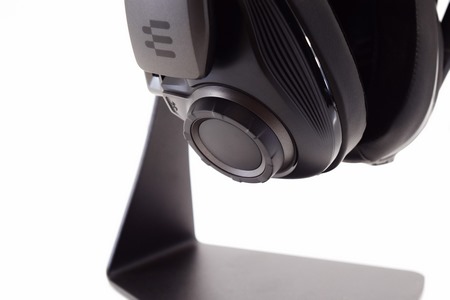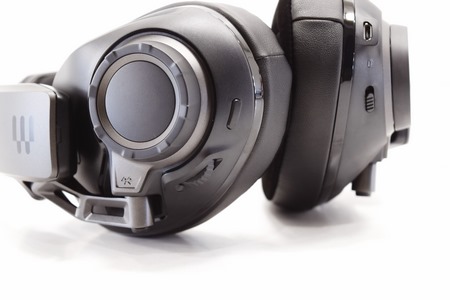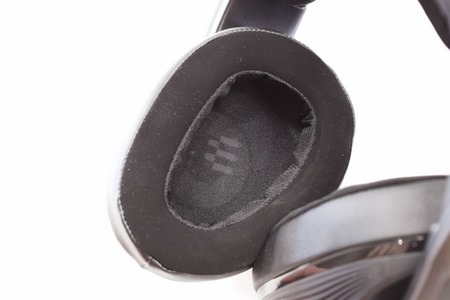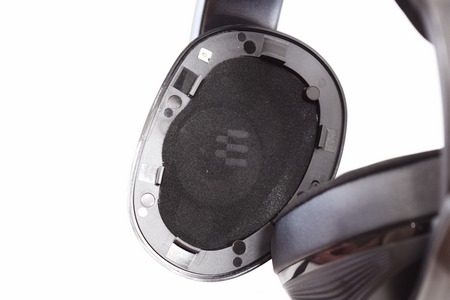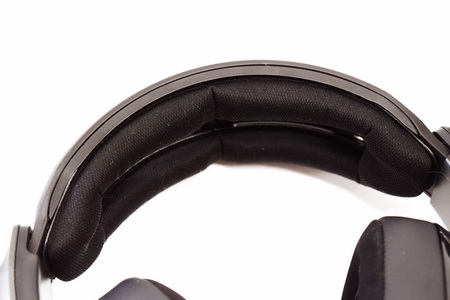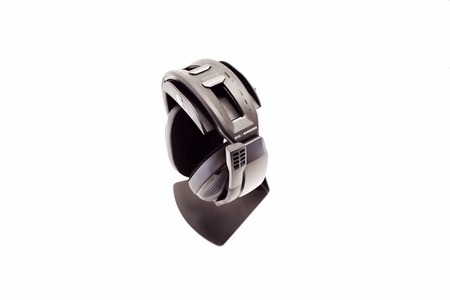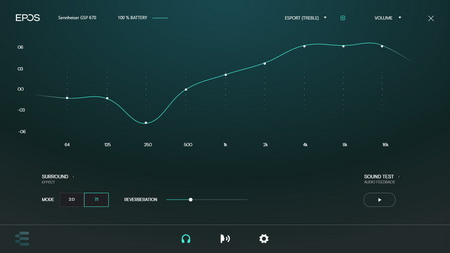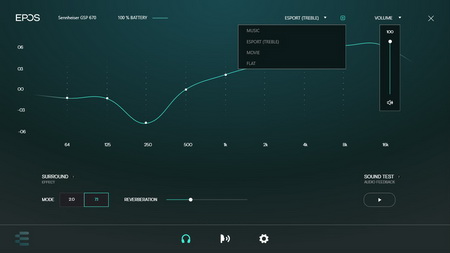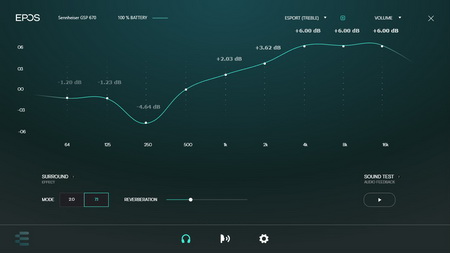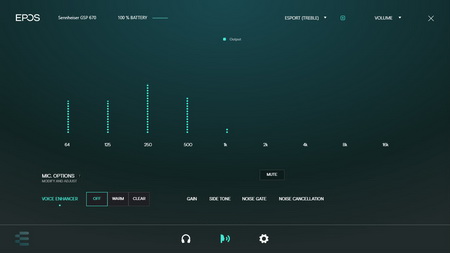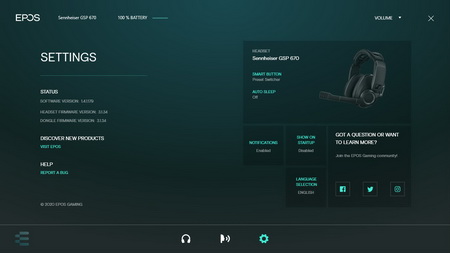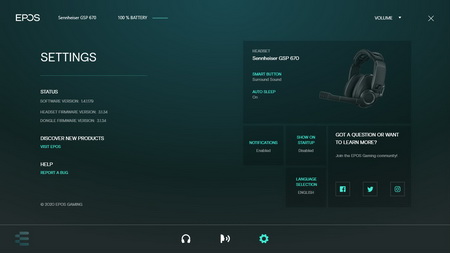INTRODUCTION
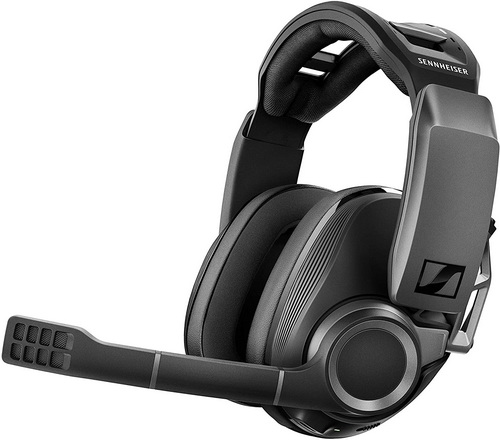
Wireless gaming headsets may already count well over a decade in the market but it wasn't until 2018 that consumer demand showed a significant increase and that seems to be the case ever since. Two things were primarily responsible for this, the introduction of numerous high-end models by most of the popular manufacturers and of course the integration of several rather recent technological advancements in this particular industry which offered impressive boosts in battery life, lag-free audio, signal quality (range) and of course higher audio fidelity. From all the wireless headsets released in 2019 and 2020 however only a handful stand out from the rest, the GSP 670 by EPOS Sennheiser is without doubt among them and it's also the focus of today's review.
ΕPOS is an audio company developing and selling devices for business professionals and the gaming community. Based on leading and advanced technologies, the newly established Danish company EPOS will deliver high-end audio solutions designed for Enterprise Solutions and Gaming headsets – with design, technology and performance as paramount parameters. EPOS derives from Latin and ancient Greek and is used to describe epic stories, speech and poetry. The name encapsulates our dedication to create solutions that enforce ways of communication and unleash human potential through the power of audio. EPOS operates in a global market with offices and partners in more than 30 countries and builds on more than 115 years of experience in sound and innovation. Find more information about EPOS at www.eposaudio.com.
Just like in the case of the GSP 370 model (review here) the GSP 670 is a closed type 7.1 virtual surround sound wireless gaming headset which is based on two 50mm neodymium dynamic stereo drivers that feature a very wide frequency response of 10Hz–23.000Hz with 112dB sensitivity. A similar noise-cancelling unidirectional boom microphone is also present here but with a far wider frequency response of 10Hz–7.3KHz with -47 dB sensitivity. Aside its rather impressive specifications however the GSP 670 also features Bluetooth connectivity (compatible with the AAC/aptX/aptX Low Latency audio codecs), two adjustable tension sliders, lift to mute microphone function, earcup volume wheel, split padded headband, memory foam ear pads, low-latency wireless connection with lag-free audio (thanks to the 2.4GHz RF USB dongle - wired use is also possible), simultaneous 2.4GHz and Bluetooth connection (2.4GHz overrides Bluetooth when not in a call) and a rechargeable lithium-ion battery pack which can provide the headset with up to 16 hours of playback (20 using the Bluetooth connection - this is honestly the only thing that the GSP 370 did better). So, let's get close and personal with the older brother of the GSP 370, the GSP 670.
SPECIFICATIONS AND FEATURES

PACKAGING AND CONTENTS
The GSP 670 arrived inside the new box which will be used by EPOS so at the front we see the new EPOS Sennheiser logo, a very large product picture and the main product features.
An exposed view of the left earcup is located on the left side right over the specifications table.
Turning the box around we see the product features list in 6 languages right next to yet another product picture.
The headset is placed inside two pieces of black foam so you don't have to worry about any issues during shipping.
Along with the GSP 670 and its 2.4GHz USB dongle EPOS also packs an USB extension cable, 1.5m micro USB charging cable, compliance paper, safety guide and a quick start manual.
THE GSP 670
Weighing just 398g the plastic body of the GSP 670 is lighter than expected.
As for size the GSP 670 is clearly a mid to large gaming headset.
Both the EPOS logo and the EPOS Sennheiser logo are printed on the exterior of the left side.
Instead of the EPOS Sennheiser logo on the exterior of the right side we see the model name.
Just like with the GSP 370 the GSP 670 features a fixed noise-cancelling unidirectional boom microphone that has a rubber coated section which as you can see is very flexible (pull it up to mute it). The microphone also features a built-in windscreen for optimal results.
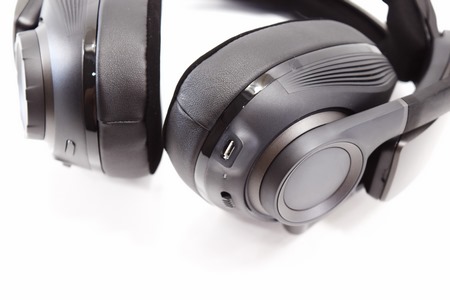
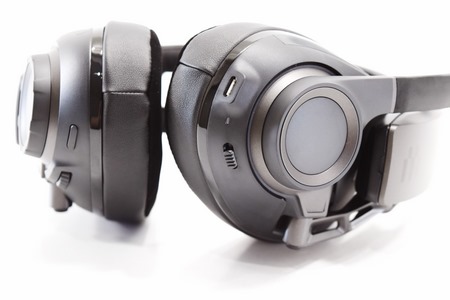 On the base of the left earcup we find the micro USB port, activity LED and the Bluetooth pairing slider.
On the base of the left earcup we find the micro USB port, activity LED and the Bluetooth pairing slider.
Again, just like with the GSP 370 the GSP 670 features a large dial from where you can adjust the main volume and turn the headset on and off (just turn the dial all the way down to turn the headset off).
At the bottom of the right earcup we find the surround sound/preset switcher button and a small roller from where you can adjust the volume of the microphone (chat).
Even though the memory foam earpads EPOS used leatherette all around the front and center are actually made by fabric.
To remove the earpads just pull them outwards (push them on all sides to re-attach them).
By using a split padded headband your head doesn't get as hot as with other models thus increasing comfort levels.
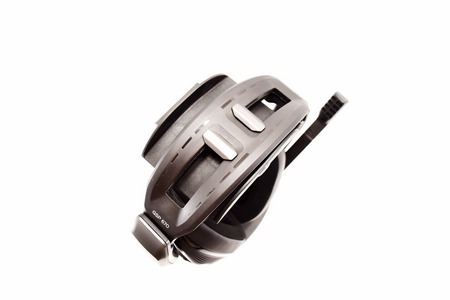
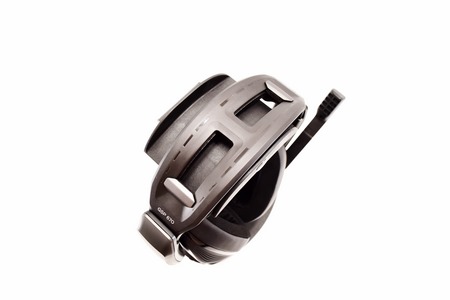 Taking a look at the top we see the two adjustable tension sliders (these don't change things much, just enough for you to adjust to the GSP 670 easier).
Taking a look at the top we see the two adjustable tension sliders (these don't change things much, just enough for you to adjust to the GSP 670 easier).
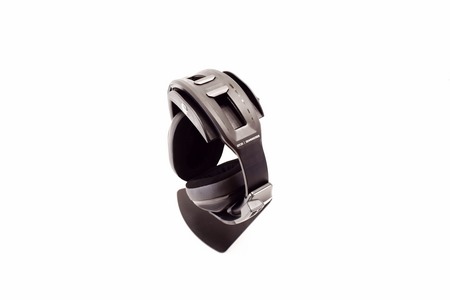 Each side of the GSP 670 can extend up to 55mm (110mm total) via 12 increments (not visible ones).
Each side of the GSP 670 can extend up to 55mm (110mm total) via 12 increments (not visible ones).
EPOS GAMING SUITE
Other than the fact that the PC Gaming Suite software has now been renamed to EPOS Gaming Suite, has the EPOS logo all over and the color used is green nothing else has changed since i reviewed the GSP 370 so one again from the speaker tab you can check the status of the battery, adjust the volume, choose one of the 4 available presets (esport/flat/movie/music), switch between stereo (2.0) and virtual surround sound (7.1), set the reverberation level and perform a sound test.
From the microphone tab you can enhance your voice (warm/clear effects), mute the microphone and adjust the gain, side tone, noise gate and the noise cancellation features.
The settings tab is where you can check the current firmware (for both the headset and the dongle - version 3.1.34 was used for this review) and software versions, perform updates (the headset can only be updated while plugged into a USB port), change the function for the right earcup button (surround sound/preset switcher) and enable/disable the auto sleep feature.
CONCLUSION
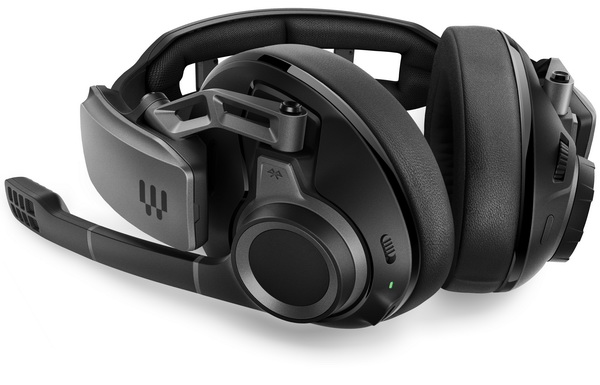
Having already reviewed the GSP 370 i had very high expectations from its larger brother the GSP 670 and i can't say that i was disappointed. Both mids and highs are very clear, positioning audio is surprising accurate and in terms of bass levels well it's actually been a while since i had a wireless headset capable of what the GSP 670 is. Now the GSP 670 does tend to emphasize bass a bit more than the GSP 370 which in turn may "suffocate" highs under certain circumstances but that can actually be a good thing since in both games and movies it produced clearer voice results. Another good thing is the automatic switch between the 2.4GHz and Bluetooth wireless connections since the latter only overrides the former if there's an incoming call (or an outgoing one). The support for AAC, aptX and aptX Low Latency audio codecs was also a pleasant surprise, even though it would really be nice to see a Hi-Res one like LDAC or even aptX HD (granted this would be mostly a marketing move but for some people these audio codecs could actually be the decisive factor). As for battery life EPOS claims that the GSP 670 can last up to 16 hours with 2.4GHz wireless connectivity and 20 hours with Bluetooth wireless connectivity, two numbers which as expected during my tests i was unable to hit. Still i did record just over 14 and 1/2 hours using the 2.4GHz USB dongle and almost 18 hours using Bluetooth so their numbers are not far off (if you decide to use both simultaneously battery levels should deplete even faster). Another surprise was the omni-directional noise cancelling microphone which produced slightly better (clearer and more natural) results compared to that used in the GSP 370 (and that was already a good microphone). Wireless range was also at good levels since i could use the GSP 670 from the next room with a concrete wall in between (roughly 6.5 meters distance) but any farther and problems would arise (something however which applies to like 99% of the headsets out in the market so personally i don't consider that to be a drawback).
The GSP 670 is the current flagship model in the EPOS Sennheiser gaming product line so it didn't really come as a surprise to see that it currently retails for USD319 inside the USA (Amazon.com) and for 250.58Euros inside the EU (Amazon.de). The only question is whether or not the GSP 670 is worth the hefty premium over the very good GSP 370 and the answer is, it depends. Yes, the GSP 670 is clearly better in every single thing, aside battery life compared to the GSP 370 but audio performance is not worlds apart between these two models so if you can’t afford the former then the latter is also a very good choice. That being said the GSP 670 is not the flagship model of the EPOS gaming line for no reason and since it delivers as advertised it deserves our Platinum Award.

PROS
- Very Good Build Quality
- Clear & Accurate Mids & Highs
- Bass Levels
- 7.1 Positioning Audio Performance
- 2.4GHz & Bluetooth Connectivity
- Very Comfortable (Split Padded Headband / Tension Sliders / Memory Foam Earpads)
- Up To 20 Hours Of Battery Life
- Flexible Unidirectional Boom Microphone (Works Great Too)
- PC Gaming Suite Software (Easy To Use)
CONS
- Battery Life (Especially Compared To The GSP 370)

 O-Sense
O-Sense





